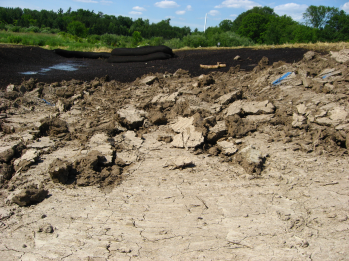Construction Specifications for Implementing Compost Amended Planting Soil in Ontario
 The quality and handling of soils and amendments used to construct the green infrastructure that makes our cities, towns and villages healthy and attractive places to live can greatly affect the sustainability of the landscapes produced. As a follow up and update to the 2012 publication, Preserving and Restoring Healthy Soil: Best Practices for Urban Construction, a standard template was developed for specifying compost amendment and soil restoration best practices in landscape construction tender documents, contracts and updates to municipal and provincial standards. Development of the template specification was informed by a project advisory committee comprised of individuals with expertise in provincial and municipal topsoil standards, landscape design, civil engineering, urban forestry, horticultural research, compost quality standards, excess soil management, and the composting and soil blending industries. The committee was asked to provide input on recommended planting soil specifications and implementation best practices that are suited to a wide range of landscape construction projects across Ontario.
The quality and handling of soils and amendments used to construct the green infrastructure that makes our cities, towns and villages healthy and attractive places to live can greatly affect the sustainability of the landscapes produced. As a follow up and update to the 2012 publication, Preserving and Restoring Healthy Soil: Best Practices for Urban Construction, a standard template was developed for specifying compost amendment and soil restoration best practices in landscape construction tender documents, contracts and updates to municipal and provincial standards. Development of the template specification was informed by a project advisory committee comprised of individuals with expertise in provincial and municipal topsoil standards, landscape design, civil engineering, urban forestry, horticultural research, compost quality standards, excess soil management, and the composting and soil blending industries. The committee was asked to provide input on recommended planting soil specifications and implementation best practices that are suited to a wide range of landscape construction projects across Ontario.
The template provides specification writers an easy means of incorporating recommended minimum standards and best practices for alleviating excessive soil compaction and implementing compost-based organic amendment practices into their plans, designs or standards. The template specification is based on the Canadian National Master Specification (NMS) and CSI Masterformat® templates in common use by engineers and landscape designers in Ontario and incorporates aspects of the Planting Soil template developed by the Urban Tree Foundation (www.urbantree.org).
Implementing these specifications and best practices will restore healthy soil structure, increase soil permeability and moisture holding capacity, and supply nutrients and soil biota needed to establish the plantings and stimulate nutrient cycling. They will produce landscapes that absorb more rainwater and snowmelt, require less irrigation to become established and are more resilient to drought conditions anticipated in a changing climate. They will also improve the capacity of the soil to retain pollutants delivered to it by runoff from impervious surfaces. They may also eliminate or reduce the need to apply chemical fertilizers to establish plantings. Harvesting and re-use of topsoil also helps to reduce costs and greenhouse gas emissions associated with transporting soil to and from the site.
Through the process to develop the specification template, a version 2.0 of the simple-to-use Topsoil and Soil Amendment Calculator spreadsheet tool was also produced that allows users to customize compost amendment rates based on knowledge of the physical and chemical characteristics of the materials to be used. Designers engaged in developing Soil Management and Landscaping Plans for construction projects can also use the tool to estimate the quantity and costs of materials needed to implement the best practices on a project site.
